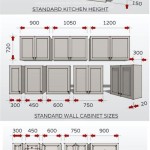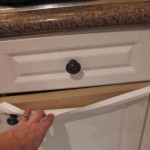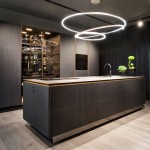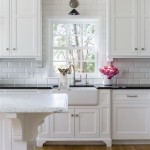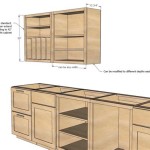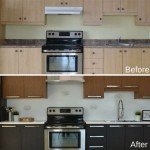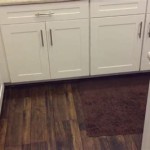How Much Does Spray Painting Kitchen Cabinets Cost?
The cost of spray painting kitchen cabinets is a frequently asked question for homeowners looking to refresh their kitchen without the expense of a complete remodel. Several factors contribute to the overall price, making it difficult to provide a single, universal answer. This article will explore the various aspects that influence the cost of spray painting kitchen cabinets, providing a comprehensive understanding of the pricing structure and helping homeowners make informed decisions.
Spray painting kitchen cabinets offers a significant aesthetic upgrade at a fraction of the cost of replacing them. The process involves thoroughly cleaning, sanding, priming, and then applying multiple coats of specialized paint using a spray gun. This method achieves a smooth, factory-like finish that is often more durable than traditional brush or roller application. However, the preparation and skill required for professional spray painting contribute to the overall cost.
Understanding the cost breakdown allows homeowners to budget effectively and compare quotes from different professionals. The pricing can vary significantly depending on the size of the kitchen, the type of cabinets, the chosen paint product, and the complexity of the job.
Key Factors Influencing the Cost of Spray Painting Kitchen Cabinets
Multiple elements combine to determine the final cost of spray painting kitchen cabinets. These factors range from the size and type of cabinets to the preparation required and the paint quality used. A clear understanding of these variables is essential for accurately estimating the project's expense.
Cabinet Size and Quantity: The most significant factor influencing cost is the size and quantity of cabinets needing painting. More cabinets naturally require more labor, materials, and time, translating to a higher overall price. The size of each cabinet (height, width, and depth) will also contribute to the total surface area requiring preparation and painting.
A smaller kitchen with fewer cabinets will generally cost less to spray paint than a larger kitchen with numerous cabinets, including upper and lower units, islands, and pantry doors. Contractors typically provide estimates based on a per-cabinet cost or a total linear foot measurement. It is crucial to clarify how the contractor calculates their pricing and whether it includes all parts of the cabinet such as doors, drawers, and the cabinet frames.
Cabinet Material and Condition: The material of your kitchen cabinets will significantly impact the preparation process and, consequently, the cost. Solid wood cabinets generally require more preparation than laminate or MDF (Medium Density Fiberboard) cabinets. Wood cabinets may need more extensive sanding and filling to create a smooth, even surface for the paint to adhere correctly.
The condition of the cabinets is also a crucial consideration. If the cabinets have significant damage, such as deep scratches, gouges, or water damage, more extensive repairs will be necessary before painting can begin. Repairing these damages will increase the overall project cost.
Paint Type and Quality: The type and quality of paint selected will directly affect the final cost. Higher-quality paints generally offer better coverage, durability, and a more professional finish. Specialized cabinet paints are often formulated to resist chipping, scratching, and moisture, making them a worthwhile investment.
Acrylic-based paints and conversion varnishes are popular choices for kitchen cabinets due to their durability and smooth finish. Oil-based paints were formerly a common choice but are now less prevalent because of their strong odor and longer drying times. The paint color and sheen level (e.g., matte, satin, semi-gloss) can also influence the price, as certain pigments or finishes may require more coats for full coverage.
Labor Costs and Location: Labor costs account for a significant portion of the overall cost to spray paint kitchen cabinets. Labor rates vary depending on the contractor's experience, the complexity of the job, and geographic location. Areas with a higher cost of living generally have higher labor rates.
The contractor's experience and reputation can also impact the price. Seasoned professionals with a proven track record may charge more for their services but can offer superior workmanship and a greater guarantee of satisfaction. Obtaining quotes from multiple contractors and comparing their pricing and experience is essential.
Preparation Work Required: Thorough preparation is critical for a successful spray painting project. This includes removing cabinet doors and drawers, thoroughly cleaning and degreasing all surfaces, sanding to create a smooth surface, and applying primer. In some cases, it may also involve taping off areas to protect them from overspray.
The extent of preparation work required will depend on the condition of the cabinets and the desired finish. If the cabinets have a glossy finish or are coated with varnish, more extensive sanding will be needed to ensure proper paint adhesion. The preparation process can be time-consuming and labor-intensive, contributing significantly to the overall cost.
Understanding the Scope of Work and Associated Costs
Before obtaining quotes, it is crucial to define the scope of work clearly. This includes specifying which parts of the cabinets will be painted (doors, drawers, frames), the desired finish (color, sheen), and the necessary preparation work. A detailed scope of work ensures that all contractors are bidding on the same project, allowing for accurate comparison of quotes.
Disassembly and Reassembly: The process begins with the careful removal of all cabinet doors and drawers. This step is crucial for achieving a smooth, even finish without streaks or brush marks. All hardware, such as hinges and knobs, should be removed and stored safely.
The cost of disassembly and reassembly is typically included in the overall project cost. However, it is important to confirm this with the contractor, especially if the cabinets have intricate hardware or require special tools for removal. Some homeowners opt to disassemble the cabinets themselves to save on labor costs, but this can add extra time and effort to the project.
Cleaning and Degreasing: Thorough cleaning and degreasing are essential to remove dirt, grease, and grime from the cabinet surfaces. This step ensures that the paint adheres properly and prevents any contaminants from affecting the finish. A specialized degreasing solution is typically used to remove stubborn stains and buildup.
The cost of cleaning and degreasing is usually included in the preparation work and is factored into the overall project cost. However, if the cabinets are exceptionally dirty or require extensive cleaning, the contractor may charge an additional fee.
Sanding and Priming: Sanding is necessary to create a smooth, even surface for the paint to adhere correctly. The sanding process helps to remove any existing imperfections, such as scratches or dents, and creates a slightly rough surface that promotes paint adhesion. After sanding, the surfaces are primed to provide a uniform base for the paint.
Priming is a crucial step in the spray painting process. It helps to seal the surface, block stains, and ensure that the paint adheres properly. The type of primer used will depend on the cabinet material and the desired finish. Some contractors use tinted primers to improve the coverage of the paint color.
Spray Painting and Finishing: The spray painting process involves applying multiple coats of paint using a high-quality spray gun. This method achieves a smooth, even finish that is free from brush marks. The number of coats required will depend on the paint color and the desired finish.
After the paint has dried, a final coat of clear sealant may be applied to protect the finish and enhance its durability. The sealant helps to resist scratches, stains, and moisture, ensuring that the cabinets look their best for years to come.
Hardware Installation: Once the paint has dried completely, the hardware is reinstalled, and the cabinet doors and drawers are reattached. This step requires careful attention to detail to ensure that the hardware is properly aligned and the cabinets function smoothly.
The cost of hardware installation is typically included in the overall project cost. However, if the homeowner is replacing the hardware with new knobs or pulls, there may be an additional charge for installation. Some homeowners opt to install the hardware themselves to save on labor costs.
Cost-Saving Strategies and Considerations
While spray painting kitchen cabinets can be a significant investment, there are several strategies to help homeowners reduce costs without compromising the quality of the finish. Careful planning, selective DIY work, and smart material choices can contribute to a more budget-friendly project.
DIY Preparation Work: Homeowners can save money by handling some of the preparation work themselves. This includes removing cabinet doors and drawers, cleaning and degreasing the surfaces, and even light sanding. However, it is essential to perform these tasks carefully and thoroughly to ensure a good-quality finish.
Choosing Affordable Paint: While high-quality paint is generally recommended for durability and finish, homeowners can explore more affordable options without sacrificing too much quality. Consulting with a paint professional can help identify suitable paints that offer a good balance of cost and performance.
Getting Multiple Quotes: Obtaining quotes from multiple contractors is crucial for comparing prices and services. Be sure to provide each contractor with a detailed scope of work to ensure that they are bidding on the same project. Comparing quotes can help homeowners identify the best value for their money.
Timing the Project: Some contractors may offer discounts during off-peak seasons, such as winter or early spring. Scheduling the project during these times can potentially save money. However, it is essential to ensure that the weather conditions are suitable for painting.
Consider Refacing: If the cabinet boxes are in poor condition, refacing may be a more cost-effective option than spray painting. Refacing involves replacing the cabinet doors and drawer fronts while keeping the existing cabinet boxes. This can be a good option for homeowners who want to update the look of their kitchen without replacing the entire cabinetry.
In summary, the cost of spray painting kitchen cabinets is influenced by a multitude of factors, including cabinet size, material, condition, paint quality, labor costs, and the extent of preparation work required. By understanding these factors and implementing cost-saving strategies, homeowners can effectively budget for their project and achieve a refreshed kitchen at a reasonable price.

How Much Does It Cost To Spray Paint Kitchen Cabinets

How Much Does It Cost To Spray Paint Kitchen Cabinets S No 1 Professional Upvcspray Painting

Spray Paint Kitchen Cabinets Costs In 2024 Checkatrade

How Much Does It Cost To Spray Paint Kitchen Cabinets S No 1 Professional Upvcspray Painting

How Much Does It Cost To Spray Paint Kitchens Cabinets Cheshire Upvc Coatings

Want To Find Out How Spray Paint Kitchen Cabinets Like A Pro

How Much Does It Cost To Spray Paint Kitchen Cabinets Sketch

Cost To Paint Kitchen Cabinets 2024 Data Angi

The Procoat Process Kitchens

Want To Find Out How Spray Paint Kitchen Cabinets Like A Pro
Related Posts

